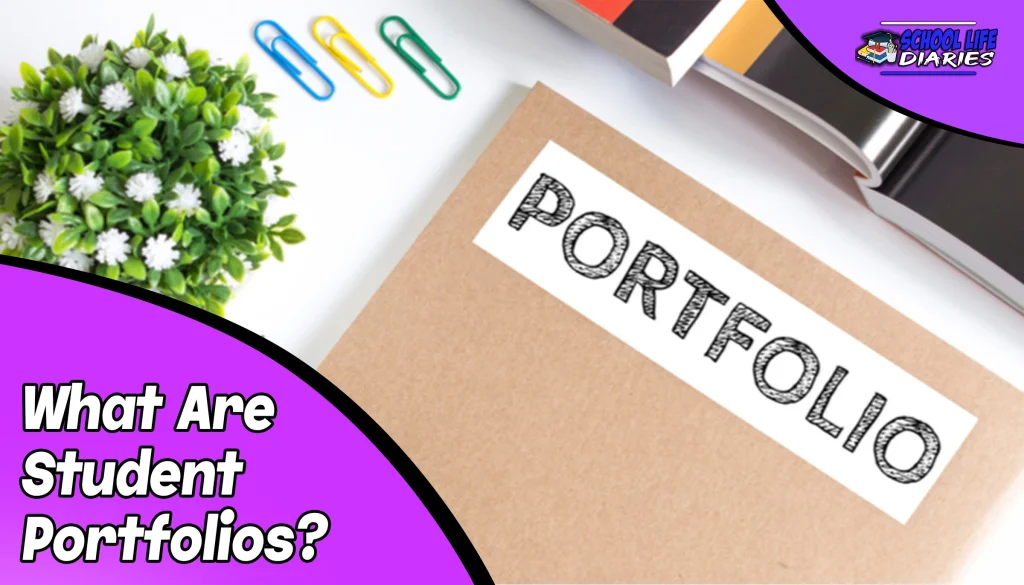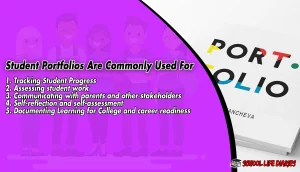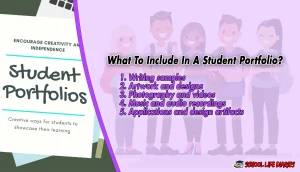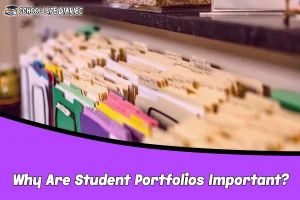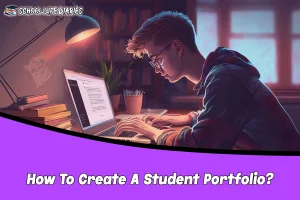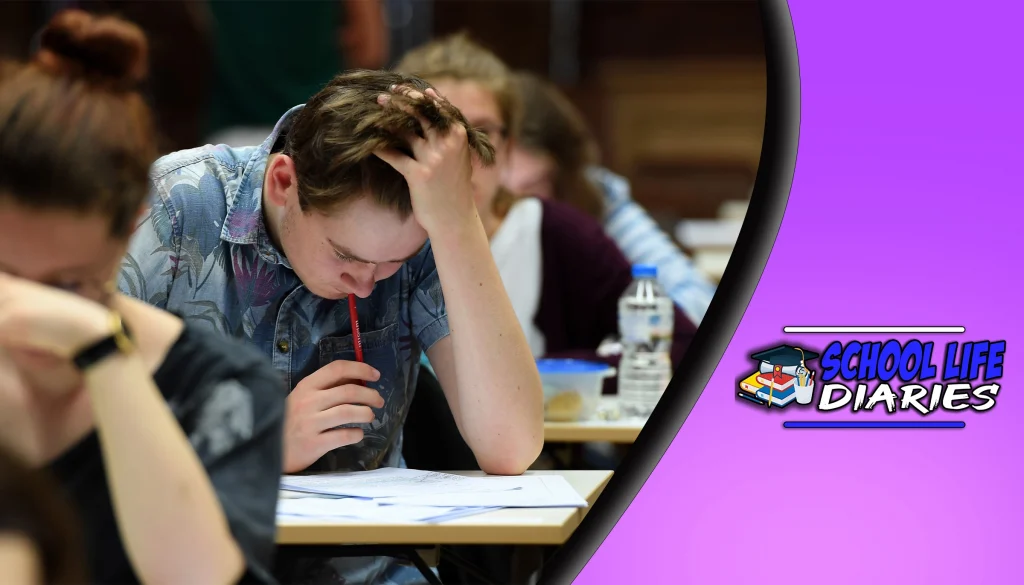Student portfolios are an essential part of modern education systems, providing students with a platform to document their academic progress and achievements in a structured manner. A student portfolio is a collection of evidence that showcases the knowledge, skills, and abilities gained by students throughout their academic journey.
The portfolio can include a wide range of materials such as written assignments, projects, presentations, photographs, videos, and assessments. In today’s fast-paced world where traditional education models are being challenged by innovative approaches to learning and skill development, student portfolios have become increasingly popular among educators worldwide.
Portfolios provide students with an opportunity to take ownership of their learning experience and demonstrate their unique strengths to potential employers or higher education institutions. In this article, we will explore the definition of student portfolios, what they should include, why they are important for students’ futures, and how to create them effectively.
Student Portfolio Definition
The concept of student portfolios is commonly defined as a curated collection of academic work and accomplishments that showcase an individual’s learning progress and achievements over time. These portfolios are often used in educational settings to assess students’ development, monitor their growth, and evaluate their performance. There are different types of student portfolios that vary in terms of content, purpose, and format.
Some examples include process portfolios which document the steps taken by students to complete a particular project or assignment; showcase portfolios which highlight the best work done by students; and assessment portfolios which demonstrate mastery of specific skills or competencies.
Student Portfolios Are Commonly Used For:
Student portfolios are versatile tools that serve multiple purposes. They are primarily used to track student progress, assess their work and communicate with parents and other stakeholders.
They enable self-reflection and self-assessment while documenting learning for college and career readiness. These key points demonstrate the value of student portfolios in facilitating a comprehensive approach to education that goes beyond academic achievement alone.
1. Tracking Student Progress:
One approach to monitoring and evaluating student growth and development involves the use of systematic and ongoing tracking methods. This is where student portfolios come in handy, as they provide a comprehensive record of a student’s progress over time.
Portfolios are an individualized approach to assessment methods that take into account the unique learning styles and needs of each student. Technology integration has made it easier than ever to create digital portfolios that can be easily shared with parents, teachers, or even potential employers.
By using data analysis tools, educators can gain insights into how students are progressing in various subject areas and identify areas where additional support may be needed. The use of student portfolios helps promote accountability for both students and teachers while also providing a valuable tool for ongoing evaluation and growth.
2. Assessing student work:
Assessing student work is a critical component of evaluating student learning and providing feedback for improvement. Grading rubrics are a common tool used in assessing student work as they provide clear criteria for evaluation and help ensure consistency in grading.
Performance evaluations, such as exams or projects, are often used to assess student learning at the end of a unit or course. These summative assessments can provide valuable information on what students have learned but may not provide opportunities for formative feedback.
Peer assessment is another method that can be used to assess student work. This involves having students evaluate each other’s work using established criteria or rubrics. Peer assessment can be a valuable tool for promoting self-reflection and critical thinking skills while also providing feedback from multiple perspectives.
Formative feedback, such as comments on drafts or early versions of assignments, can also be useful in assessing student work and guiding their progress toward achieving learning goals. Effective assessment practices should incorporate a variety of methods to gather data on student learning and provide both formative and summative feedback for improvement.
3. Communicating with parents and other stakeholders:
Effective communication with parents and other stakeholders is crucial in ensuring that they are informed about student progress and involved in the educational process. A student portfolio is an excellent tool for facilitating parent communication and stakeholder engagement.
Portfolios allow teachers to provide regular progress updates, share successes, and address concerns proactively. Portfolios can be used to showcase student work, including assignments, projects, and assessments. Teachers can use portfolios to demonstrate the development of a student’s skills over time and highlight areas where improvement is needed.
By sharing this information with parents and stakeholders regularly, teachers can keep them informed about their child’s performance in school. Portfolios provide an avenue for students to take ownership of their learning by reflecting on their progress throughout the year.
This collaborative approach allows parents to stay engaged in their child’s education while giving students a sense of autonomy over their academic journey. Effective communication through portfolios can lead to higher levels of engagement from all parties involved in the educational process.
4. Self-reflection and self-assessment:
Self-reflection and self-assessment are important practices for individuals to assess their own progress and identify areas for improvement. In the context of student portfolios, these practices can help students take ownership of their learning and become more engaged in the process.
The benefits of incorporating self-reflection and self-assessment into student portfolios include increased motivation, improved goal-setting skills, and a deeper understanding of one’s own strengths and weaknesses. There are also challenges associated with implementing self-reflection and self-assessment in student portfolios.
For example, some students may struggle with identifying their own areas for improvement or may be hesitant to provide honest feedback about themselves. To overcome these challenges, educators can use strategies such as providing clear guidelines for reflection prompts or offering opportunities for peer feedback.
Examples of best practices in this area include using rubrics or checklists to guide the reflection process and providing opportunities for students to discuss their reflections with others. Overall, integrating self-reflection and self-assessment into student portfolios can be a powerful tool for promoting deeper learning and enhancing student engagement.
5. Documenting Learning for College and career readiness:
As mentioned in the previous subtopic, self-reflection, and self-assessment are crucial elements of student portfolios. However, documenting learning is equally important for college and career readiness. By tracking their progress through a portfolio, students can showcase their skills and knowledge to potential employers or college admissions officers.
There are many benefits to creating a student portfolio, including providing evidence of growth over time, highlighting strengths and weaknesses, and fostering a reflection process. With digital options available today, students have more ways than ever before to organize their work in a way that is both visually appealing and easy to navigate.
Utilizing organization strategies within the portfolio can help students stay on track with assignments throughout the school year. By incorporating all of these elements into their portfolios, students will be better prepared for success in both their academic pursuits and future careers.
What To Include In A Student Portfolio?
This section will discuss the essential elements to consider when creating a student portfolio. Writing samples, artwork and designs, photography and videos, music and audio recordings, as well as applications and design artifacts are all important components that should be included in a comprehensive portfolio.
Each of these pieces can serve as evidence of a student’s growth, progress, and achievements in various areas of study or interests. By including these materials in their portfolios, students can showcase their skills and accomplishments to potential employers or academic institutions.
1. Writing samples:
Writing samples included in student portfolios provide an opportunity to showcase their writing skills and progress throughout their academic journey. These samples are often a compilation of written assignments, essays, and research papers completed by the student over time.
By including writing samples in their portfolio, students can demonstrate the development of their writing skills and how they have improved over time with consistent practice. Writing samples allow for peer feedback and teacher evaluation which can aid in assessing a student’s abilities objectively.
Peer feedback is particularly valuable as it allows students to receive comments from individuals who share similar experiences and can offer constructive criticism for improvement. Teacher evaluations also provide objective insights into a student’s strengths and areas that need improvement.
2. Artwork and designs:
Moving on from writing samples, another important component of a student portfolio is artwork and designs. Artistic expression can be a powerful tool for communication and self-expression, making it an essential element in showcasing one’s skills and creativity.
Whether it’s through painting, photography, or other visual mediums, students have the opportunity to showcase their artistic talents and unique perspective through their work. In addition to highlighting one’s creative process and individual style, artwork can also serve as a form of visual storytelling.
Graphic design plays an especially critical role in this aspect as it involves combining visuals and text to communicate a message effectively. Through portfolio presentations, students can demonstrate their ability to utilize graphic design principles such as color theory, typography, and composition to create compelling pieces that resonate with viewers.
Overall, incorporating artwork into a student portfolio adds depth and dimension to their overall profile while showcasing their artistic abilities in a visually engaging way.
3. Photography and videos:
Photography and videos are powerful mediums that can effectively capture moments, convey emotions, and tell stories, making them valuable components to include in a well-rounded portfolio. Students who wish to showcase their photography or videography skills must pay attention to various elements such as editing techniques, lighting techniques, composition tips, storytelling methods, and equipment choices.
Editing techniques play a significant role in enhancing the quality of visual content. Students must familiarize themselves with software programs like Adobe Lightroom or Final Cut Pro to edit their photographs or videos respectively. Lighting is another crucial aspect of photography and videography. The right use of lighting can create dramatic effects that enhance the overall quality of photos and videos. Composition is also vital when it comes to creating visually appealing content.
4. Music and audio recordings:
Moving forward from the previous subtopic of photography and videos, student portfolios can also include music and audio recordings. This is particularly relevant for students in music education or those who are interested in pursuing a career in the music industry.
Audio production has become an increasingly important aspect of modern music, with digital technology making it easier than ever to record, edit and produce high-quality recordings. In addition to performance recordings, student portfolios can also include evidence of their understanding of music theory and analysis.
This could take the form of written essays or annotated scores that demonstrate their knowledge and critical thinking skills. By including a variety of audio and written materials, students can showcase their musical abilities as well as their academic achievements within the field of music education.
5. Applications and design artifacts:
Applications and design artifacts are essential components of a student portfolio. They provide a tangible representation of the student’s skills and abilities in software development and design thinking. Through multimedia presentations, students can showcase their proficiency in using various tools, such as Adobe Creative Suite or Sketch, to create visually appealing designs that convey a message effectively.
Project-based learning is an integral aspect of creating design artifacts. This approach allows students to apply their knowledge and skills in real-world scenarios while incorporating visual storytelling techniques. By showcasing their work through applications and design artifacts, students can demonstrate their creativity, problem-solving abilities, and attention to detail.
Why Are Student Portfolios Important?
Student portfolios have become a popular assessment tool in education. They showcase student learning and progress over time through the collection of work samples, reflections, and self-assessments.
Portfolios provide students with an opportunity to take ownership of their learning and demonstrate their growth, while also providing teachers with valuable insights into student strengths and areas for improvement.
In this discussion, we will explore why portfolios are important for both students and teachers in promoting meaningful learning experiences.
Why Are Portfolios Important For Students?
The significance of portfolios in the academic realm lies in their ability to provide a holistic view of students’ progress, skills, and achievements. Portfolios are an effective tool that allows students to showcase their best work while also highlighting areas where they need improvement.
By compiling samples of their work over time, students can track their growth and development in various skills such as critical thinking, problem-solving, communication, and collaboration. Moreover, portfolios are not only beneficial for improving academic performance but also for career readiness.
They help students develop important transferable skills that are highly valued by employers such as organization, time management, attention to detail, and self-reflection. Portfolios serve as a powerful assessment tool that enables educators and employers to assess students’ strengths and weaknesses accurately.
Furthermore, it is an excellent means for professional growth since it encourages lifelong learning by allowing individuals to reflect on their accomplishments continually.
Why Are Portfolios Important For Teachers?
Assessment of teachers’ professional growth and development can be enhanced by utilizing portfolios as a means to showcase their expertise, skills, and contributions in the academic setting. Portfolios allow educators to document their progress over time, highlight areas for improvement, and demonstrate how they have incorporated new teaching strategies into their curriculum.
This personalized learning approach not only benefits educators but also contributes to student growth, as teachers are constantly seeking ways to improve their instructional practices. In addition to personalizing learning for educators, portfolios can also serve as a valuable tool for data collection and assessment strategies.
Teachers can use portfolio assessments to monitor student progress over time and identify areas where students may need additional support or enrichment opportunities. By collecting data through multiple sources such as classroom observations, student work samples, and teacher reflections on teaching practice, portfolios provide a comprehensive view of a student’s academic journey.
This holistic approach allows teachers to gain insights into student strengths and challenges while also providing an avenue for goal-setting and future planning. Ultimately, the use of portfolios in education serves as a powerful tool that helps both educators and students achieve success in the classroom.
How To Create A Student Portfolio?
One effective approach for constructing a comprehensive student portfolio is, to begin with clear goals and objectives that align with the desired learning outcomes. This involves defining what skills and knowledge students should demonstrate as they progress through their educational journey.
Once these goals are established, teachers can then work on selecting appropriate examples of student work that illustrate each of these objectives. To create high-quality portfolios, teachers should consider utilizing various tools and resources to help design them effectively.
For instance, digital platforms like Google Drive or Microsoft OneDrive can be used to store and organize student work in an easily accessible manner. Rubrics or other evaluation criteria can be created to ensure consistency across all portfolios and provide clear guidance for both students and teachers.
It’s essential to evaluate the effectiveness of student portfolios regularly. This involves reflecting on whether the selected examples accurately represent student progress toward achieving learning outcomes and identifying areas where further improvement might be needed.
By taking a thoughtful approach to creating and evaluating portfolios, teachers can support their students’ growth while also providing valuable evidence of their achievements over time.
Defining The Purpose and Goals of the Portfolio
After learning how to create a student portfolio, it is important to define the purpose and goals of this educational tool. A student portfolio is a collection of academic work, achievements, and reflections that showcase a learner’s progress over time.
This compilation aims to provide evidence of growth, development, and learning outcomes that can be used for assessment purposes or future career opportunities. The benefits of using student portfolios in education are numerous. For one, it encourages active participation from learners as they take ownership of their academic growth.
It also promotes self-reflection which leads to critical thinking skills development. Moreover, parents and teachers have the opportunity to see the progress made by the students throughout the year through regular updates on their portfolios. Examples of implementation strategies include incorporating digital platforms like Google Drive or OneNote where both teachers and students can easily share files and reflect on each other’s work.
Best practices for using student portfolios involve setting clear expectations for what should be included in them such as specific criteria or rubrics. Teachers can also provide regular feedback to help students improve their portfolios further. Despite its many advantages, implementing student portfolios may face challenges such as resistance from traditional forms of assessment or lack of resources necessary for creating digital ones.
With proper planning and support from administrators and educators alike, these challenges can be overcome resulting in an effective way to track student progress while promoting self-reflection skills at the same time.
Conclusion:
Student portfolios are a collection of work samples that demonstrate a student’s learning progress and achievements over time. They can include a variety of items, such as essays, projects, artwork, and presentations. Portfolios serve multiple purposes in education, including showcasing student growth and achievement, offering opportunities for reflection and self-assessment, providing evidence of skills and knowledge to potential employers or colleges, and encouraging students to take ownership of their learning.
Creating a student portfolio involves defining the purpose and goals of the portfolio, selecting appropriate materials to include from coursework or extracurricular activities, and organizing these materials in an accessible format that reflects the intended audience and purpose of the portfolio. It is important to continuously update the portfolio as new pieces are completed or revised.

